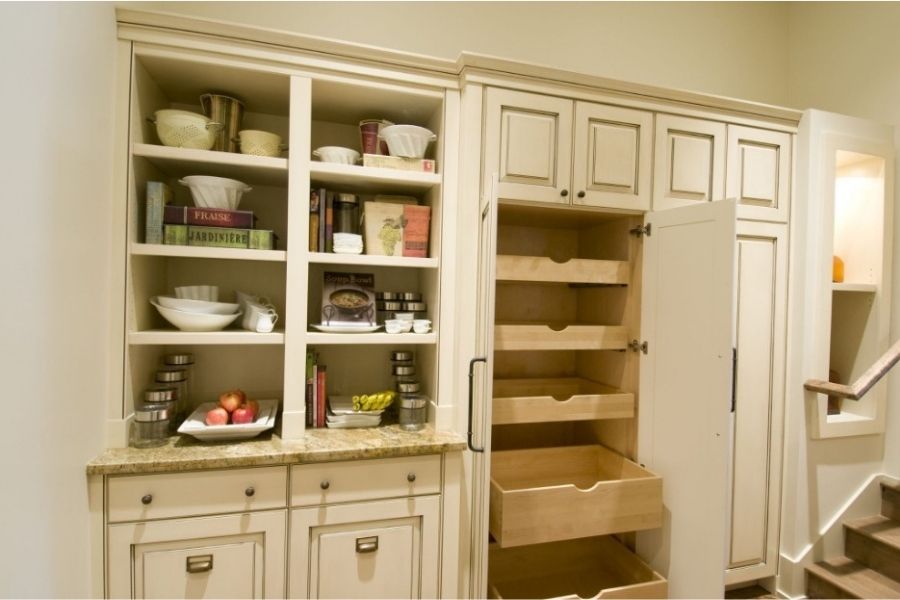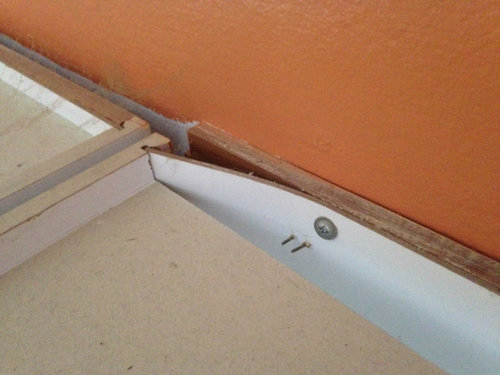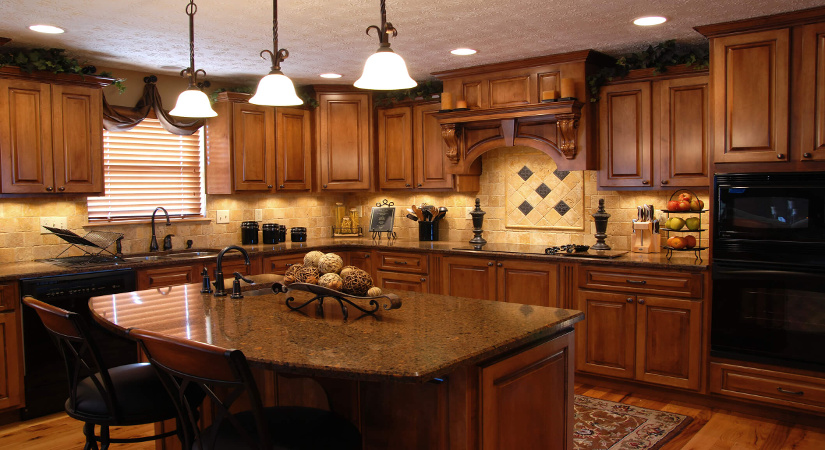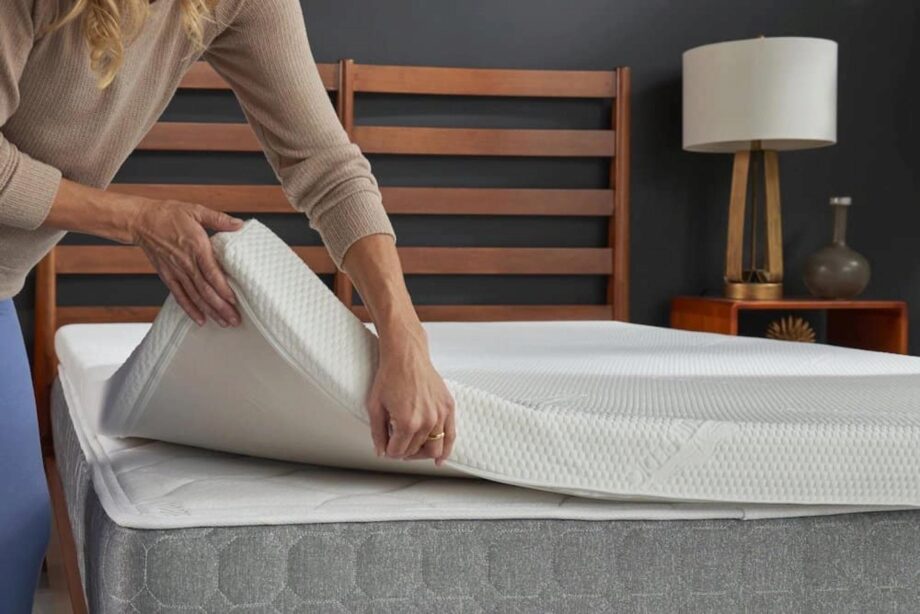If you've noticed that your kitchen cabinet is separating from the wall, it's important to address the issue as soon as possible. Not only can it be an eyesore, but it can also be a safety hazard. But don't panic, there are several ways you can fix a separating kitchen cabinet. Read on to learn more!How to Fix a Kitchen Cabinet Separating from the Wall
There are various methods for repairing a kitchen cabinet that is separating from the wall. Here are five solutions you can try: 1. Tighten Screws: The first step is to check if any screws are loose and tighten them with a screwdriver. This may be a quick and easy fix for minor separation. 2. Use L-Brackets: If the screws are stripped or the cabinet is still loose, you can use L-brackets to secure the cabinet to the wall. Simply attach the brackets to the cabinet and the wall using screws. 3. Add Support Blocks: For a more permanent fix, you can add support blocks between the cabinet and the wall. These blocks will help distribute the weight and relieve pressure on the screws. 4. Use Adhesive: Another option is to use a strong adhesive like construction adhesive or wood glue to bond the cabinet to the wall. This method is best for cabinets that are slightly separated. 5. Reinstall the Cabinet: If the cabinet is severely damaged or the separation is too large, you may need to completely remove and reinstall the cabinet. This is best done by a professional to ensure proper installation and safety.5 Ways to Repair a Loose Kitchen Cabinet
If you're feeling handy, there are a few DIY solutions you can try to fix a kitchen cabinet that is separating from the wall: 1. Use Toothpicks: If the screw holes are stripped, you can fill them with toothpicks and wood glue. Once dry, you can insert new screws for a secure hold. 2. Add Filler: For small gaps between the cabinet and the wall, you can use caulk or wood filler to fill in the space. Sand it down once dry for a seamless look. 3. Use a Support Rod: If the cabinet is sagging, you can use a support rod to prop it up. This can be a temporary solution until you can properly repair the cabinet.DIY Solutions for a Separating Kitchen Cabinet
There are a few reasons why your kitchen cabinet may be separating from the wall. Some common causes include: 1. Heavy Weight: Over time, the weight of dishes, appliances, and other items can put pressure on the screws and cause them to loosen. 2. Humidity and Moisture: Excess humidity and moisture in the kitchen can cause wood to expand and contract, which can lead to separation. 3. Poor Installation: If the cabinet was not properly installed, it may not be securely attached to the wall. 4. Age and Wear: Over time, wear and tear can cause screws to loosen and cabinets to become unstable.Common Causes of Kitchen Cabinets Separating from the Wall
To avoid the headache of a separating kitchen cabinet, here are a few tips for preventing it from happening: 1. Use Proper Installation Techniques: If you're installing new cabinets, make sure to follow proper techniques and use the right tools to ensure a secure hold. 2. Don't Overload Cabinets: Be mindful of the weight you are placing on your cabinets and avoid overloading them with heavy items. 3. Keep Moisture in Check: Use a dehumidifier or exhaust fan in the kitchen to control humidity and moisture levels. 4. Regular Maintenance: Make sure to regularly check and tighten screws, and address any signs of wear and tear before it becomes a bigger issue.Tips for Preventing Kitchen Cabinets from Separating from the Wall
If you're not comfortable fixing a separating kitchen cabinet yourself, you can always hire a professional to do the job for you. A handyman or contractor will have the necessary tools and expertise to properly repair the cabinet and ensure it is safely secured to the wall.Professional Services for Fixing a Separating Kitchen Cabinet
Depending on the extent of the damage, you may be wondering if it's better to replace or repair a kitchen cabinet that is separating from the wall. Here are a few factors to consider: 1. Cost: In most cases, repairing a cabinet will be more cost-effective than replacing it. 2. Extent of Damage: If the cabinet is severely damaged or the separation is too large, it may be necessary to replace it. 3. Time and Effort: Repairing a cabinet may take more time and effort than simply replacing it. 4. Aesthetics: If the cabinet is still in good condition, repairing it may be a better option to maintain a cohesive look in your kitchen.Replacing vs. Repairing a Kitchen Cabinet that is Separating from the Wall
Here are the materials you will need to fix a kitchen cabinet that is separating from the wall: 1. Screwdriver 2. L-brackets 3. Screws 4. Support blocks 5. Construction adhesive or wood glue 6. Toothpicks (optional) 7. Caulk or wood filler (optional) 8. Support rod (optional)How to Secure a Kitchen Cabinet that is Separating from the Wall
Here is a step-by-step guide for repairing a kitchen cabinet that is separating from the wall: 1. Remove Items: Empty out the contents of the cabinet and remove any loose shelves or items that may be in the way. 2. Tighten Screws: Using a screwdriver, tighten any loose screws that may be causing the separation. 3. Install L-brackets: If the screws are stripped or the cabinet is still loose, install L-brackets to secure the cabinet to the wall. Use screws to attach the brackets to the cabinet and the wall. 4. Add Support Blocks: For added stability, you can install support blocks between the cabinet and the wall. Use screws to attach the blocks to the cabinet and the wall. 5. Use Adhesive: If the cabinet is slightly separated, you can use a strong adhesive like construction adhesive or wood glue to bond it to the wall. 6. Reinstall the Cabinet: If the cabinet is severely damaged or the separation is too large, it may be necessary to remove and reinstall the cabinet. This is best done by a professional. 7. Sand and Paint (optional): If you used filler or caulk to fill in gaps, sand it down and paint over it for a seamless look.Step-by-Step Guide for Repairing a Kitchen Cabinet that is Separating from the Wall
Why Do Kitchen Cabinets Separate From the Wall?

The Importance of Proper Installation
The Role of Structural Changes
 One of the main reasons why kitchen cabinets may separate from the wall is due to structural changes in the house. Over time, houses settle and shift, causing the walls to move and create gaps between the cabinets and the wall. This can also happen if there are changes made to the layout of the house, such as removing a wall or adding an extension. These structural changes can put added stress on the cabinets, causing them to pull away from the wall.
One of the main reasons why kitchen cabinets may separate from the wall is due to structural changes in the house. Over time, houses settle and shift, causing the walls to move and create gaps between the cabinets and the wall. This can also happen if there are changes made to the layout of the house, such as removing a wall or adding an extension. These structural changes can put added stress on the cabinets, causing them to pull away from the wall.
The Impact of Moisture and Humidity
 Moisture and humidity are two other significant factors that can contribute to kitchen cabinets separating from the wall. Kitchens are one of the most humid rooms in the house, with steam from cooking and moisture from dishwashing. If cabinets are not properly sealed, the constant exposure to humidity can cause the wood to expand and contract, leading to gaps between the cabinets and the wall. This is especially common in older homes with poor ventilation.
Moisture and humidity are two other significant factors that can contribute to kitchen cabinets separating from the wall. Kitchens are one of the most humid rooms in the house, with steam from cooking and moisture from dishwashing. If cabinets are not properly sealed, the constant exposure to humidity can cause the wood to expand and contract, leading to gaps between the cabinets and the wall. This is especially common in older homes with poor ventilation.
The Importance of Professional Installation
 Proper installation is crucial to ensuring that your cabinets stay securely attached to the wall. It is recommended to hire a professional for this task, as they have the necessary expertise and tools to ensure a secure installation. They can also assess the structural integrity of the wall and make any necessary adjustments to prevent cabinets from separating in the future.
In conclusion, kitchen cabinets separating from the wall can be a frustrating issue for homeowners to deal with. However, by understanding the root causes and taking necessary precautions, such as hiring a professional for installation and regularly checking for any structural changes, you can prevent this problem from occurring in your dream kitchen.
So, if you are planning a kitchen renovation or have noticed gaps between your cabinets and the wall, be sure to address these issues promptly to maintain the integrity and functionality of your kitchen.
Proper installation is crucial to ensuring that your cabinets stay securely attached to the wall. It is recommended to hire a professional for this task, as they have the necessary expertise and tools to ensure a secure installation. They can also assess the structural integrity of the wall and make any necessary adjustments to prevent cabinets from separating in the future.
In conclusion, kitchen cabinets separating from the wall can be a frustrating issue for homeowners to deal with. However, by understanding the root causes and taking necessary precautions, such as hiring a professional for installation and regularly checking for any structural changes, you can prevent this problem from occurring in your dream kitchen.
So, if you are planning a kitchen renovation or have noticed gaps between your cabinets and the wall, be sure to address these issues promptly to maintain the integrity and functionality of your kitchen.
:max_bytes(150000):strip_icc()/kitchen-light-green-island-runner-rug-2hK_llc9aJ7A3hZPl8I3uL-dc1d194748274258999a69edf5e89dd1.jpg)






/steps-to-clean-kitchen-cabinets-1900630-Front-6913c926a4044caf8d5b6207c81bf123.jpg)


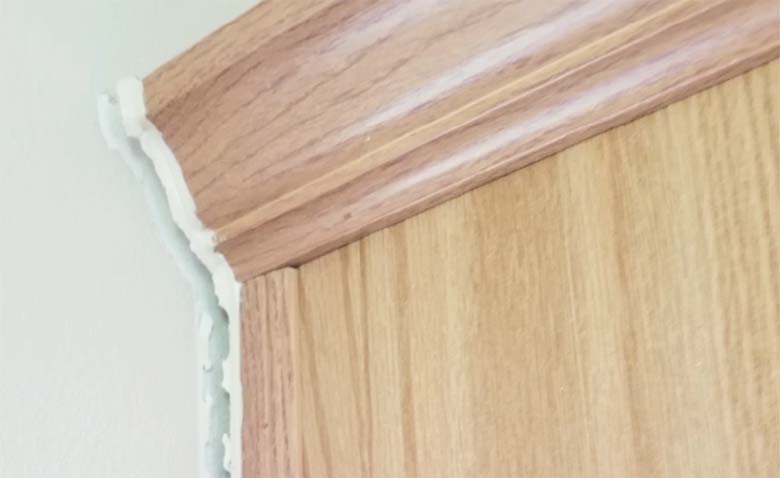







:max_bytes(150000):strip_icc()/2_-_Collection-5b09b655ff1b780036c3f477.jpg)


/cabinet-refacing-demystified-1822044v2-29c0506ee7014a54a7473d9a5d85b149.jpg)










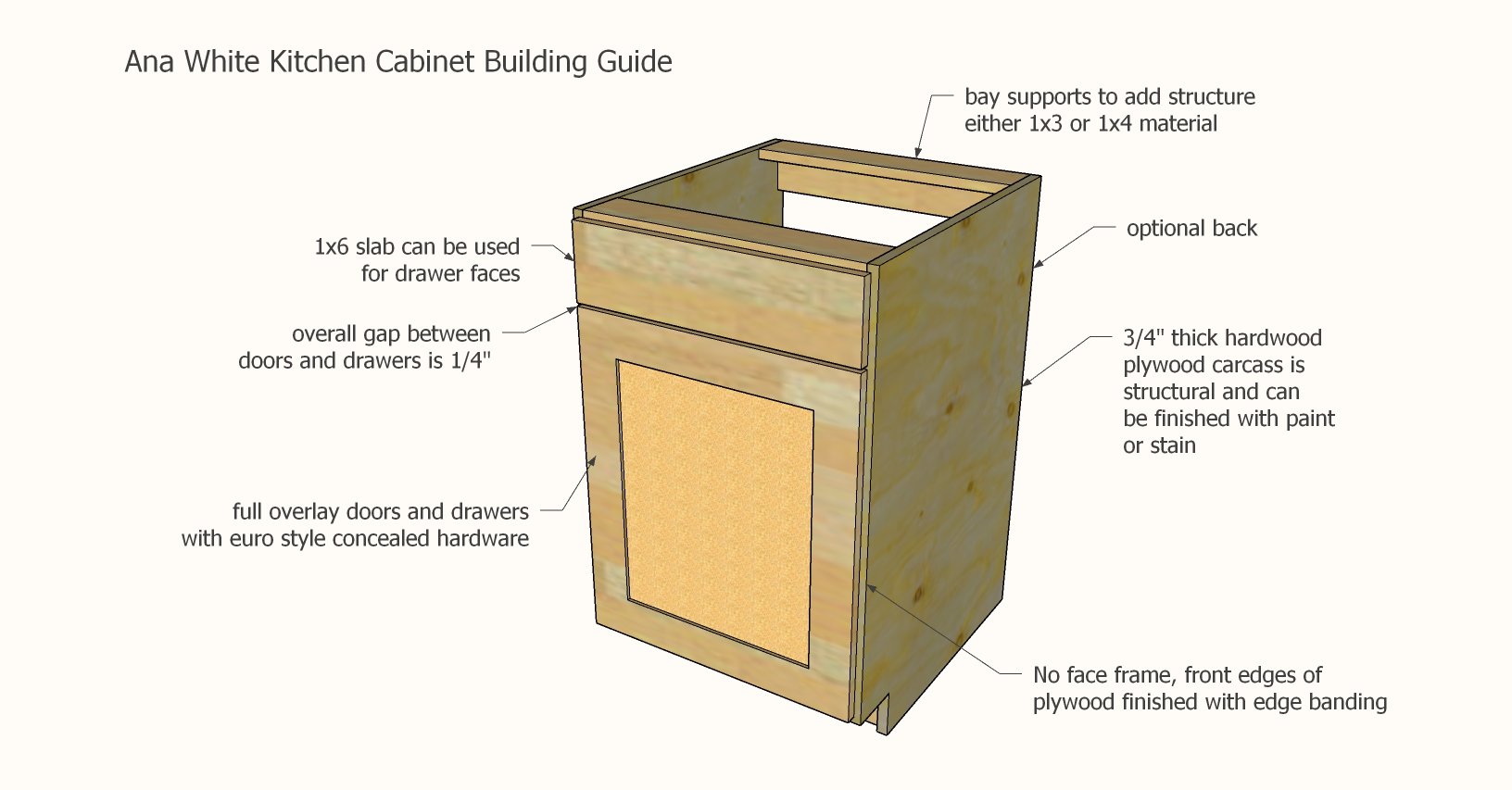























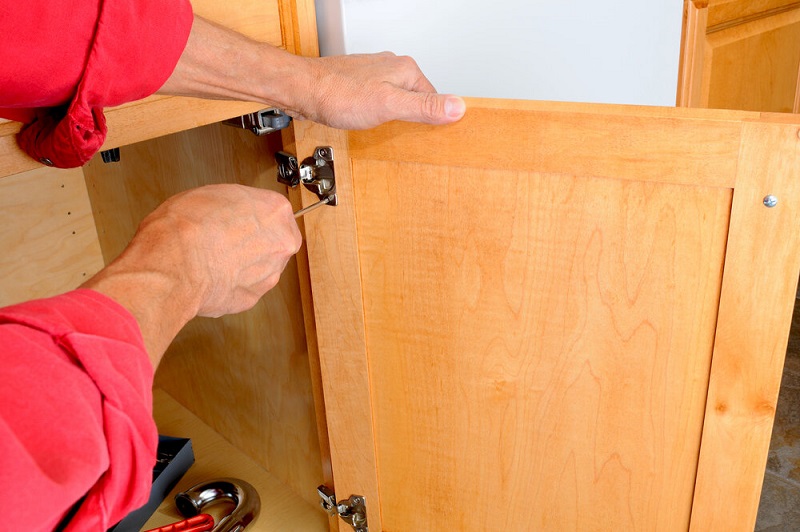









/kitchen_wall_cabinet-94096625-5887da8d5f9b58bdb39910dd.jpg)




